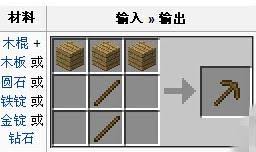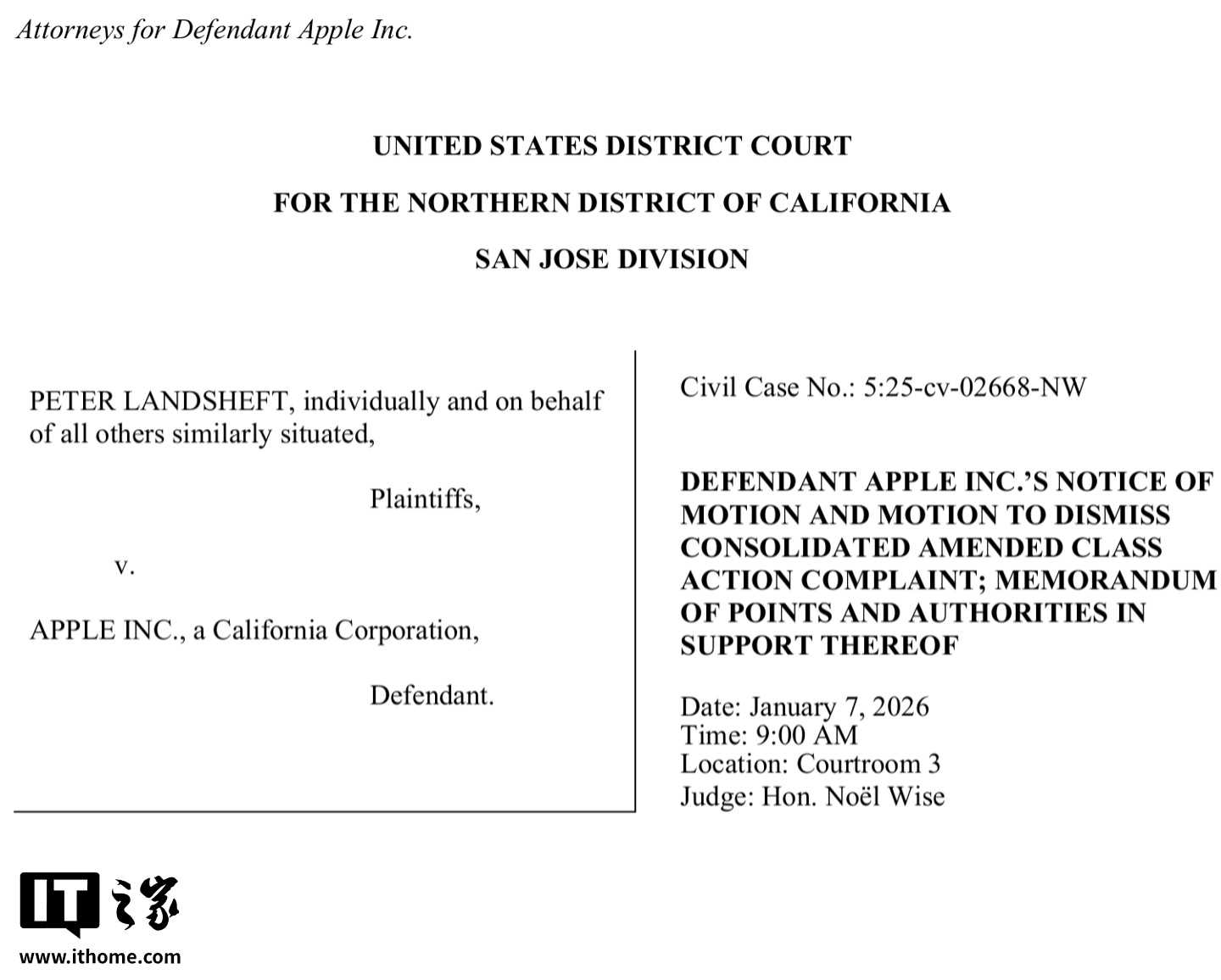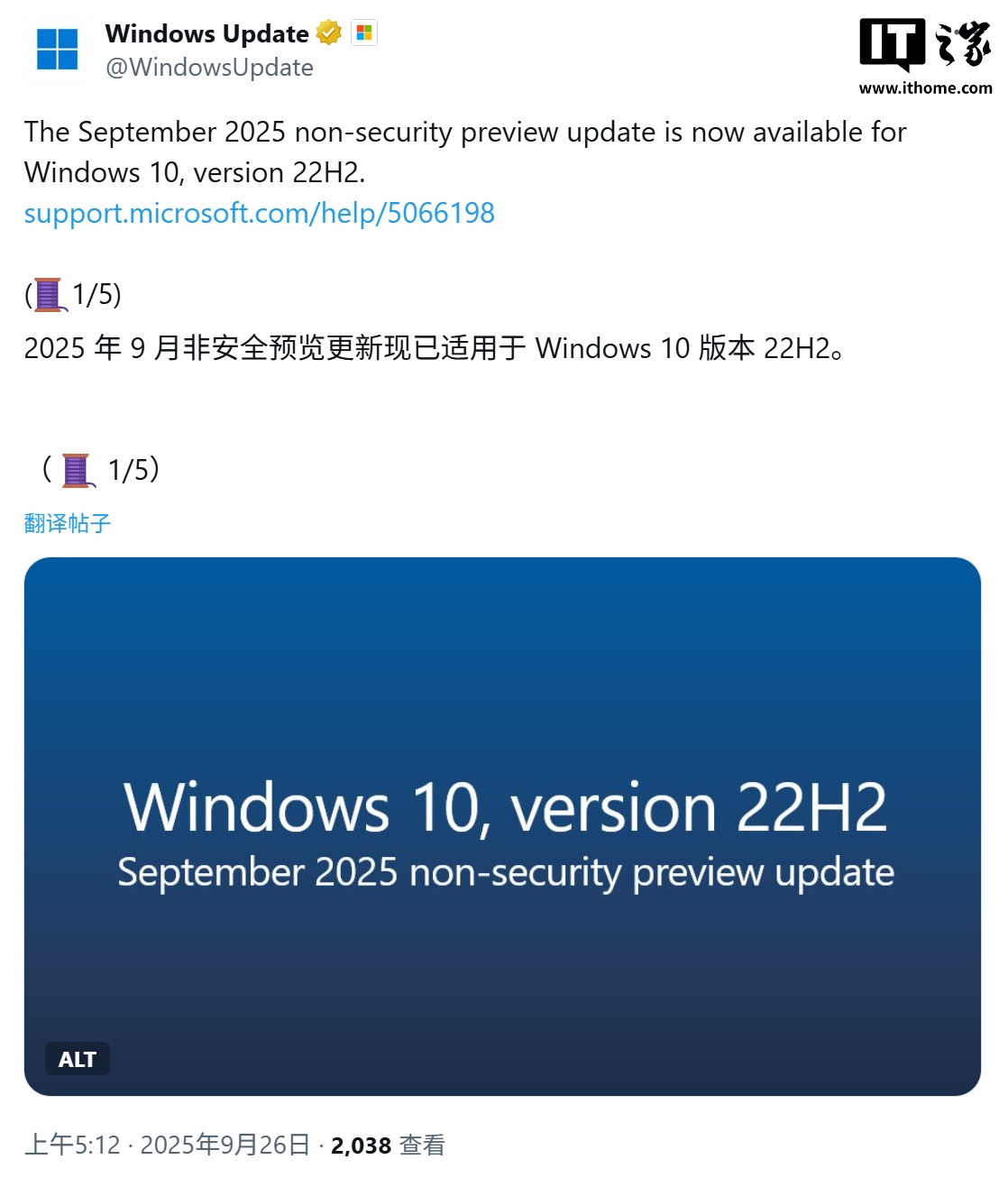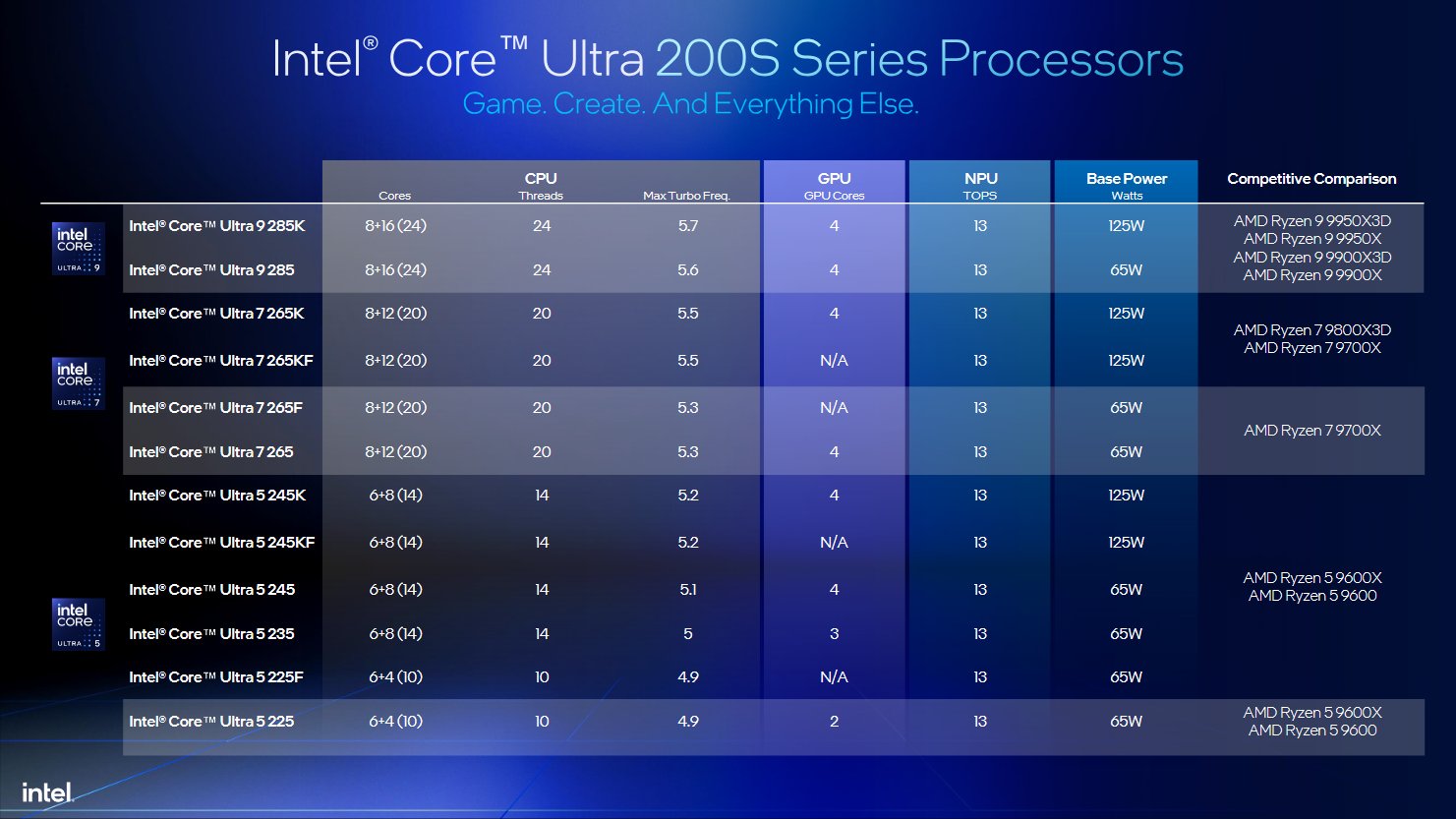【新手入门】0基础学习用AI模型进行预测(以A股股票场景为例、基于Paddle)

本教程将带领大家从0开始,学习如何使用深度学习模型进行时序预测,以股票价格预测为实战案例。通过本教程,希望您将掌握从数据收集、模型构建到预测分析的完整流程。

【新手入门】0基础学习用AI模型进行预测(以股票场景为例)(基于PaddlePaddle)
课程概览
本教程将系统全面地讲解如何运用深度学习技术搭建股票预测系统,带领学习者从零基础逐步掌握完整的实现流程。课程内容覆盖数据获取、特征工程、模型构建、预测分析四大核心环节,每个环节都将进行细致的技术实现讲解,确保学习者能够理解并掌握每个步骤的原理和操作方法。项目基于PaddlePaddle深度学习框架,实现了融合注意力机制、残差连接和集成学习的先进预测模型,帮助学习者在实战中提升AI模型构建和应用能力。
适合人群
有一定Python基础,希望踏入深度学习领域的开发者致力于深入学习深度学习技术,提升模型构建能力的工程师对量化交易充满兴趣,想要探索AI在金融领域应用的研究者渴望通过实战项目提升AI实战能力,积累工程经验的程序员核心特点
1. 技术深度
注意力机制增强的LSTM模型:通过注意力机制捕捉时序数据中的关键信息,提升模型对重要特征的敏感度,增强模型的预测能力。集成学习提升预测稳定性:结合多个模型的预测结果,通过加权融合的方式动态调整模型权重,减少单模型偏差,提高预测的稳定性和准确性。多维度特征工程:涵盖基础特征处理和多维度特征处理,支持可扩展的特征工程框架,能够根据不同需求提取多样化的特征。市场情绪分析:通过计算资金流量指标等情绪指标,分析市场资金动态和趋势强度,为预测提供更多维度的参考信息。2. 工程实践
完整的工程化实现:从数据采集、预处理到模型构建、预测分析,再到可视化展示,实现了完整的项目流程,具备实际应用价值。模块化设计:将项目划分为数据采集、模型实现、可视化分析等多个模块,每个模块功能独立,便于开发、维护和扩展。异常处理机制:在数据获取、模型训练等过程中加入异常处理,提高系统的鲁棒性,确保程序稳定运行。性能优化方案:针对数据处理、模型训练和预测等环节进行性能优化,提升系统的运行效率和处理能力。3. 创新特性
多时间框架分析:从不同时间尺度对股票数据进行分析,捕捉短期波动和长期趋势,为预测提供更全面的视角。市场情绪指标:引入资金流量指数(MFI)、能量潮指标(OBV)等市场情绪指标,辅助判断市场趋势和投资者情绪。自适应特征选择:根据数据特点和模型需求,动态选择最相关的特征,提高特征的利用效率和模型的性能。动态模型集成:根据不同的市场环境和数据特征,动态调整集成模型中各子模型的权重,提升预测的灵活性和准确性。技术详解
一、系统架构
1. 核心模块
aistudio/ ├── data_collector.py # 负责数据采集与预处理,包含多市场数据获取、智能重试机制和特征工程等功能 ├── stock_predictor.py # 实现预测模型,包括注意力机制、增强型LSTM模型和集成学习等关键技术 ├── visualization.py # 用于可视化分析,生成交互式图表展示预测结果和市场数据 └── requirements.txt # 记录项目所需的依赖库,方便环境配置登录后复制
2. 技术栈
深度学习框架:PaddlePaddle,提供高效的深度学习模型开发和训练支持。数据处理:Pandas用于数据清洗、转换和处理,NumPy用于数值计算和数组操作。数据获取:AKShare和yfinance,支持多市场(A股、美股等)股票数据的获取。可视化:Plotly,生成交互式图表,方便用户进行数据可视化分析。机器学习:scikit-learn,提供数据预处理、模型评估等工具。二、核心功能实现
1. 数据采集与预处理 (data_collector.py)
(1) 数据获取
def get_stock_data(self, ticker, start_date, end_date, market='US', max_retries=3): """支持多市场数据获取,包含重试机制""" for attempt in range(max_retries): try: if market == 'US': data = self._get_us_stock_data(ticker, start_date, end_date) elif market == 'CN': data = self._get_cn_stock_data(ticker, start_date, end_date) if data is not None and not data.empty: return data # 智能重试机制 if attempt < max_retries - 1: wait_time = (attempt + 1) * 2 + random.uniform(0, 1) time.sleep(wait_time)登录后复制
技术要点:
多市场支持:通过条件判断分别调用美股和A股的数据获取函数,实现对不同市场股票数据的获取。智能重试:采用指数退避算法,根据重试次数动态调整等待时间,避免因频繁请求被限制,提高数据获取的可靠性。数据验证:在获取数据后,检查数据是否为空或无效,确保输入模型的数据具有完整性和有效性。(2) 特征工程
def preprocess_data(self, data, seq_length=30, features=None): """高级特征预处理""" if features is None: # 基础特征处理 close_prices = data['Close'].values.reshape(-1, 1) scaled_data = self.scaler.fit_transform(close_prices) else: # 多维度特征处理 scaled_data = self.scaler.fit_transform(features) # 序列化处理 x, y = [], [] for i in range(len(scaled_data) - seq_length): x.append(scaled_data[i:i+seq_length]) y.append(scaled_data[i+seq_length, 0])登录后复制
技术要点:
特征标准化:使用MinMaxScaler对数据进行标准化处理,将数据缩放到特定的范围(通常为[0, 1]),确保不同特征的数据分布一致,提高模型的训练效率和预测精度。序列化处理:通过滑动窗口的方式,将时间序列数据转换为适合模型输入的格式。对于每个时间点i,选取前seq_length个时间点的数据作为输入特征x,第i+seq_length个时间点的数据作为目标值y,从而创建训练样本。多维度支持:既支持仅使用收盘价等基础特征,也支持使用多个维度的特征进行处理,具备灵活可扩展的特征工程框架。2. 预测模型实现 (stock_predictor.py)
(1) 注意力机制
class AttentionLayer(nn.Layer): """注意力层实现""" def __init__(self, hidden_size: int): super(AttentionLayer, self).__init__() self.attention = nn.Sequential( nn.Linear(hidden_size, hidden_size), nn.Tanh(), nn.Linear(hidden_size, 1) ) def forward(self, lstm_output): # 计算注意力权重 attention_weights = self.attention(lstm_output) attention_weights = paddle.nn.functional.softmax(attention_weights, axis=0) # 加权求和 context = paddle.sum(attention_weights * lstm_output, axis=0) return context, attention_weights登录后复制
技术要点:
注意力计算:通过两层线性变换和Tanh激活函数,计算每个时间步的注意力得分,然后使用softmax函数对注意力得分进行归一化,得到注意力权重。注意力权重反映了每个时间步的信息在预测当前时刻时的重要程度,从而捕捉时序数据中的关键信息。权重归一化:使用softmax函数对注意力权重进行归一化处理,确保权重之和为1,使得每个时间步的权重具有可比性和可解释性。上下文向量:通过将LSTM输出与对应的注意力权重相乘并求和,得到上下文向量,该向量是历史信息的加权融合,突出了重要特征,为后续的预测提供更有价值的输入。(2) 增强型LSTM模型
class EnhancedLSTMModel(nn.Layer): """增强版LSTM模型""" def __init__(self, input_size=35, hidden_size=64, num_layers=2, output_size=1, dropout=0.2): super(EnhancedLSTMModel, self).__init__() # 多层LSTM self.lstm_layers = nn.LayerList([ nn.LSTM( input_size if i == 0 else hidden_size, hidden_size, time_major=True ) for i in range(num_layers) ]) # 注意力层 self.attention = AttentionLayer(hidden_size) # 残差连接 self.residual = nn.Linear(input_size, hidden_size) # Dropout层 self.dropout = nn.Dropout(dropout)登录后复制
技术要点:
多层LSTM:通过堆叠多个LSTM层,增强模型的表达能力,能够捕捉更复杂的时序特征和长期依赖关系。残差连接:在LSTM层的输入中引入残差连接,将输入直接映射到输出,缓解梯度消失问题,使模型能够更有效地训练深层网络。Dropout:在模型中加入Dropout层,随机丢弃一部分神经元,减少神经元之间的依赖,防止过拟合,提高模型的泛化能力。注意力机制:与LSTM层结合,突出重要特征,进一步提升模型对关键信息的捕捉能力。(3) 集成学习
class EnsemblePredictor: """集成预测器""" def __init__(self, models: List[nn.Layer], weights: Optional[List[float]] = None): self.models = models self.weights = weights if weights is not None else [1.0/len(models)] * len(models) def predict(self, x: paddle.Tensor) -> paddle.Tensor: """集成预测""" predictions = [] for model, weight in zip(self.models, self.weights): with paddle.no_grad(): pred = model(x) predictions.append(pred * weight) return paddle.sum(paddle.stack(predictions), axis=0)登录后复制
技术要点:
多模型集成:将多个不同的模型(如不同参数的LSTM模型)进行组合,每个模型独立训练,通过集成它们的预测结果,提高预测的稳定性和准确性,减少单模型可能出现的偏差和过拟合问题。加权融合:为每个模型分配不同的权重,根据模型的性能动态调整权重,使得表现更好的模型在集成预测中具有更大的话语权,从而提升整体预测效果。预测优化:通过集成多个模型的预测结果,平滑预测曲线,减少预测噪声,提高预测的可靠性。3. 市场分析功能
(1) 技术指标计算
class TechnicalIndicators: """技术指标计算""" @staticmethod def calculate_macd(prices: np.ndarray, fast_period=12, slow_period=26, signal_period=9): """MACD指标计算""" prices_series = pd.Series(prices) exp1 = prices_series.ewm(span=fast_period, adjust=False).mean() exp2 = prices_series.ewm(span=slow_period, adjust=False).mean() macd = exp1 - exp2 signal = macd.ewm(span=signal_period, adjust=False).mean() hist = macd - signal return macd.values, signal.values, hist.values登录后复制
技术要点:
技术指标:计算MACD、RSI、布林带等常用技术指标,这些指标能够反映股票价格的趋势、波动幅度和超买超卖状态等信息,为预测提供辅助分析。指标优化:利用pandas的高效计算能力,快速准确地计算技术指标,提高数据处理效率。数据转换:将输入的numpy数组转换为pandas序列,确保数据类型的一致性,方便后续的指标计算和处理。(2) 市场情绪分析
class MarketSentimentAnalyzer: """市场情绪分析""" def calculate_money_flow_index(self, high, low, close, volume, period=14): """资金流量指标计算""" typical_price = (high + low + close) / 3 money_flow = typical_price * volume positive_flow = np.zeros_like(money_flow) negative_flow = np.zeros_like(money_flow) for i in range(1, len(money_flow)): if typical_price[i] > typical_price[i-1]: positive_flow[i] = money_flow[i] else: negative_flow[i] = money_flow[i]登录后复制
技术要点:
情绪指标:计算MFI、OBV等市场情绪指标,通过分析资金流向和成交量等数据,评估市场情绪和趋势强度。例如,MFI指标反映了一定时期内资金的流入和流出情况,可用于判断市场是否处于超买或超卖状态。资金流向:通过比较当前时刻和前一时刻的典型价格,确定资金的流向是正还是负,从而分析市场资金动态,为预测提供参考。趋势强度:结合情绪指标的变化趋势,评估市场趋势的强弱和持续性,辅助判断股票价格的走势。4. 可视化分析 (visualization.py)
(1) 交互式图表
def plot_stock_prediction(self, data, predictions, future_predictions, market_conditions, title="股票预测分析"): """交互式预测分析图表""" fig = make_subplots( rows=3, cols=1, shared_xaxes=True, vertical_spacing=0.05, row_heights=[0.6, 0.2, 0.2], subplot_titles=("价格预测", "市场情绪指标", "成交量") ) # 添加价格预测 fig.add_trace( go.Scatter( x=data.index[-len(predictions):], y=predictions, name='预测价格', line=dict(color=self.colors['predicted']) ), row=1, col=1 )登录后复制
技术要点:
多子图布局:采用三行一列的子图布局,分别展示价格预测、市场情绪指标和成交量等多维度信息,便于用户综合分析股票数据。交互式功能:利用Plotly的交互式功能,支持用户进行缩放、平移、数据提示等操作,方便用户深入观察数据细节和趋势变化。动态更新:支持实时数据展示,能够根据新的数据动态更新图表,帮助用户及时了解市场最新情况。三、性能优化
1. 数据处理优化
使用numpy向量化运算:将循环操作转换为向量化运算,减少Python循环的开销,提高数据处理的速度和效率。批量数据处理:对数据进行批量加载和处理,避免频繁的I/O操作和内存分配,提升数据处理的吞吐量。内存优化:合理管理数据的存储和使用,及时释放不再需要的内存空间,避免内存泄漏和内存占用过高的问题。2. 模型优化
模型量化:将模型的权重和激活值从浮点数转换为定点数,减少模型的参数大小和计算量,提高模型的推理速度,同时保持较高的预测精度。并行计算:利用GPU的并行计算能力,对模型的训练和预测过程进行加速,缩短训练时间和预测延迟。缓存机制:对常用的计算结果和数据进行缓存,避免重复计算,提高系统的响应速度。3. 预测优化
多模型集成:如前所述,通过集成多个模型的预测结果,提高预测的稳定性和准确性,减少单模型的局限性。动态权重调整:根据模型在不同市场环境下的表现,动态调整集成模型中各子模型的权重,使模型能够更好地适应市场变化。预测结果平滑:对预测结果进行平滑处理,减少短期波动的影响,使预测曲线更加稳定,便于用户分析和判断趋势。四、部署与使用
1. 环境配置
# 安装依赖 pip install -r requirements.txt # 根据requirements.txt文件安装项目所需的依赖库登录后复制
2. 运行预测
python stock_predictor.py登录后复制
3. 运行结果
#示例开始批量分析股票...开始批量分析 20 只股票...分析 贵州茅台(600519)...正在获取 600519 的A股数据...成功获取 600519 的数据,共 88 个交易日市场状况分析:趋势强度: 1.00MFI指标: 57.48特征维度检查:technical_features shape: (88, 15)sentiment_features shape: (88, 11)timeframe_features shape: (88, 9)开始训练模型...开始训练,数据集大小: 46输入特征维度: 35W0519 19:16:50.071368 263776 gpu_resources.cc:306] WARNING: device: 0. The installed Paddle is compiled with CUDNN 8.9, but CUDNN version in your machine is 8.9, which may cause serious incompatible bug. Please recompile or reinstall Paddle with compatible CUDNN version.Epoch [10/100], Average Loss: 0.177549Epoch [20/100], Average Loss: 0.068324Epoch [30/100], Average Loss: 0.042560Epoch [40/100], Average Loss: 0.031994Epoch [50/100], Average Loss: 0.030030Epoch [60/100], Average Loss: 0.034403Epoch [70/100], Average Loss: 0.025163Epoch [80/100], Average Loss: 0.023011Epoch [90/100], Average Loss: 0.026051Epoch [100/100], Average Loss: 0.021419评估模型性能...开始评估,测试集大小: 12预测未来价格...特征维度检查:technical_features shape: (88, 15)sentiment_features shape: (88, 11)timeframe_features shape: (88, 9)生成可视化结果...登录后复制
可视化结果
单独股票


多支股票

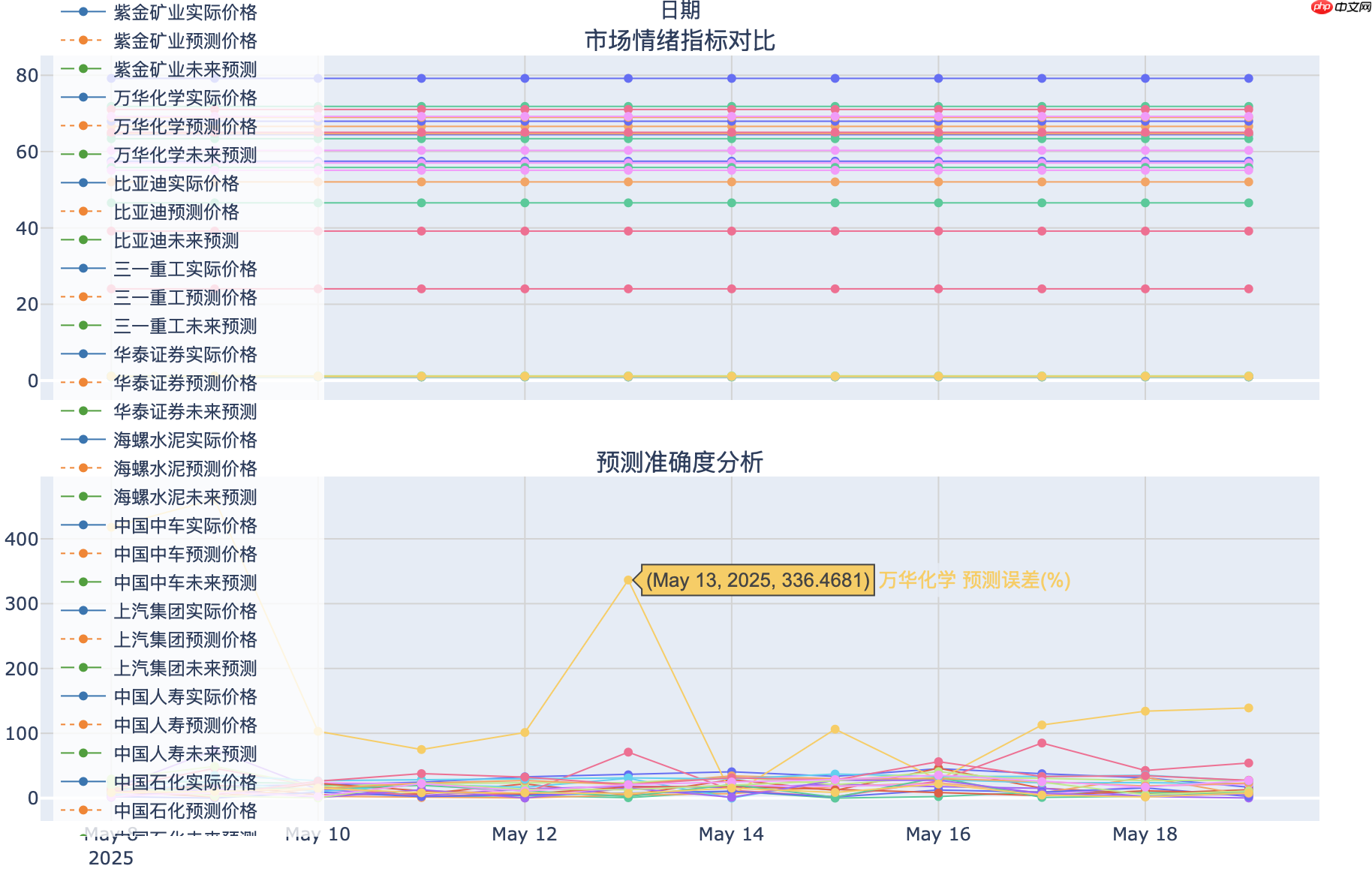
4. 结果分析
预测准确度评估:通过计算均方误差(MSE)、均方根误差(RMSE)、平均绝对误差(MAE)等指标,评估模型的预测准确度,了解模型在不同股票和时间区间上的表现。市场趋势分析:结合价格预测曲线、技术指标和市场情绪指标,分析市场的整体趋势,判断股票价格是处于上升趋势、下降趋势还是盘整状态。风险评估:通过分析预测结果的波动幅度、市场情绪指标的变化等,评估投资风险,为决策提供参考。项目特色
1. 技术创新
注意力机制增强的LSTM:通过注意力机制提升模型对关键时序信息的捕捉能力,相比传统LSTM模型,能够更准确地识别影响股票价格的重要因素。多维度特征工程:支持从不同维度提取特征,包括价格、成交量、技术指标、市场情绪等,为模型提供丰富的输入信息,提高预测的全面性和准确性。集成学习框架:构建了灵活的集成学习框架,能够方便地添加和组合不同的模型,通过加权融合提升预测的稳定性和可靠性。2. 工程实践
模块化设计:将项目划分为多个功能模块,每个模块具有明确的职责,便于开发、测试和维护,同时也有利于团队协作。异常处理机制:在数据获取、模型训练、预测等过程中加入了完善的异常处理逻辑,能够有效应对网络请求失败、数据缺失等问题,提高系统的容错能力。性能优化方案:针对数据处理、模型训练和预测等环节进行了多方面的性能优化,使系统能够在大规模数据和复杂模型下高效运行。3. 实用性强
多市场支持:能够同时处理A股和美股等多个市场的股票数据,满足不同用户的需求。实时分析:支持实时数据获取和预测,能够及时反映市场最新情况,为实时决策提供支持。可视化展示:通过交互式图表直观地展示预测结果和市场数据,方便用户进行分析和理解,降低使用门槛。学习收获
1. 技术能力
深度学习模型开发:掌握基于PaddlePaddle框架开发深度学习模型的全过程,包括模型设计、网络搭建、训练和优化等。特征工程实践:学会如何从原始数据中提取有效的特征,包括数据预处理、特征标准化、序列化处理和多维度特征构建等技术。工程化实现:了解项目的工程化设计方法,掌握模块化开发、异常处理、性能优化等工程实践技能,提升项目的可维护性和可扩展性。2. 实战经验
量化交易系统开发:通过实际项目开发,熟悉量化交易系统的整体架构和核心功能,积累在金融领域应用AI技术的实战经验。预测模型优化:掌握模型优化的常用方法,如注意力机制、残差连接、集成学习等,能够根据实际需求对模型进行调整和优化,提高预测性能。性能调优方法:学习数据处理、模型训练和预测过程中的性能调优技巧,提升系统的运行效率和处理能力。3. 应用拓展
其他金融预测场景:将所学技术应用于外汇、期货等其他金融产品的预测,拓展AI在金融领域的应用范围。时序数据分析:掌握时序数据的处理和分析方法,能够应用于天气预测、设备故障预测等其他时序数据相关的领域。深度学习应用:具备深度学习模型开发和应用的能力,能够将所学知识迁移到图像识别、自然语言处理等其他深度学习领域。注意事项
1. 技术说明
模型预测仅供参考:股票市场受到多种复杂因素的影响,模型预测结果不能完全准确地反映市场走势,仅供用户参考,不能作为投资决策的唯一依据。需要持续优化和调整:市场环境和数据特点不断变化,模型需要定期进行训练和优化,调整参数和特征,以保持良好的预测性能。建议结合其他分析方法:将模型预测结果与基本面分析、技术分析等其他分析方法相结合,综合判断市场走势,提高决策的准确性。2. 使用建议
定期更新模型:随着时间的推移,市场数据不断积累,定期使用新的数据对模型进行训练和更新,使模型能够适应市场的变化。关注市场变化:密切关注宏观经济政策、公司公告、市场情绪等因素的变化,了解这些因素对股票价格的影响,辅助分析模型预测结果。合理设置参数:根据不同的股票和市场特点,合理设置模型的参数,如序列长度、隐藏层大小、训练轮数等,以获得更好的预测效果。后续规划
1. 功能增强
支持更多技术指标:增加更多常用的技术指标计算,如随机指标(KDJ)、相对强弱指标(RSI)等,为用户提供更丰富的分析工具。添加回测系统:开发回测功能,让用户能够使用历史数据对模型的预测策略进行回测,评估策略的盈利能力和风险水平。优化预测算法:探索更先进的预测算法和模型结构,如Transformer模型、图神经网络等,进一步提升模型的预测性能。2. 性能提升
分布式计算支持:实现分布式计算架构,利用多台服务器进行数据处理和模型训练,提高系统的处理能力和扩展性,能够应对大规模数据和复杂模型的需求。GPU加速优化:进一步优化模型在GPU上的运行效率,利用GPU的并行计算能力,缩短模型训练和预测的时间。实时预测能力:提升系统的实时数据处理和预测能力,实现更快速的响应和更及时的预测结果输出。3. 应用扩展
其他金融市场:扩展对港股、期货、外汇等其他金融市场的支持,满足不同用户在不同金融领域的应用需求。更多预测场景:将技术应用于其他预测场景,如商品价格预测、经济指标预测等,拓展项目的应用范围。API接口支持:提供API接口,方便用户将预测功能集成到自己的系统中,实现与其他平台的对接和数据交互。通过本教程的学习,希望您将掌握构建股票预测系统的完整技能,并能够将这些技术应用到实际的量化交易场景中。让我们开始这个深度学习之旅,探索AI在股票预测领域的无限可能!
In [6]%%capture!pip install yfinance akshare plotly textblob optuna登录后复制 In [1]
!python stock_predictor.py登录后复制
/opt/conda/envs/python35-paddle120-env/lib/python3.10/site-packages/paddle/utils/cpp_extension/extension_utils.py:711: UserWarning: No ccache found. Please be aware that recompiling all source files may be required. You can download and install ccache from: https://github.com/ccache/ccache/blob/master/doc/INSTALL.md warnings.warn(warning_message)W0519 19:16:37.067554 263776 gpu_resources.cc:119] Please NOTE: device: 0, GPU Compute Capability: 7.0, Driver API Version: 12.0, Runtime API Version: 11.8W0519 19:16:37.068797 263776 gpu_resources.cc:164] device: 0, cuDNN Version: 8.9.开始批量分析股票...开始批量分析 20 只股票...分析 贵州茅台(600519)...正在获取 600519 的A股数据...成功获取 600519 的数据,共 88 个交易日市场状况分析:趋势强度: 1.00MFI指标: 57.48特征维度检查:technical_features shape: (88, 15)sentiment_features shape: (88, 11)timeframe_features shape: (88, 9)开始训练模型...开始训练,数据集大小: 46输入特征维度: 35W0519 19:16:50.071368 263776 gpu_resources.cc:306] WARNING: device: 0. The installed Paddle is compiled with CUDNN 8.9, but CUDNN version in your machine is 8.9, which may cause serious incompatible bug. Please recompile or reinstall Paddle with compatible CUDNN version.Epoch [10/100], Average Loss: 0.177549Epoch [20/100], Average Loss: 0.068324Epoch [30/100], Average Loss: 0.042560Epoch [40/100], Average Loss: 0.031994Epoch [50/100], Average Loss: 0.030030Epoch [60/100], Average Loss: 0.034403Epoch [70/100], Average Loss: 0.025163Epoch [80/100], Average Loss: 0.023011Epoch [90/100], Average Loss: 0.026051Epoch [100/100], Average Loss: 0.021419评估模型性能...开始评估,测试集大小: 12预测未来价格...特征维度检查:technical_features shape: (88, 15)sentiment_features shape: (88, 11)timeframe_features shape: (88, 9)生成可视化结果...分析 中国平安(601318)...正在获取 601318 的A股数据...成功获取 601318 的数据,共 88 个交易日市场状况分析:趋势强度: 1.06MFI指标: 71.84特征维度检查:technical_features shape: (88, 15)sentiment_features shape: (88, 11)timeframe_features shape: (88, 9)开始训练模型...开始训练,数据集大小: 46输入特征维度: 35Epoch [10/100], Average Loss: 0.025576Epoch [20/100], Average Loss: 0.026208Epoch [30/100], Average Loss: 0.016376Epoch [40/100], Average Loss: 0.020805Epoch [50/100], Average Loss: 0.022497Epoch [60/100], Average Loss: 0.018886Epoch [70/100], Average Loss: 0.019082Epoch [80/100], Average Loss: 0.013531Epoch [90/100], Average Loss: 0.012390Epoch [100/100], Average Loss: 0.025220评估模型性能...开始评估,测试集大小: 12预测未来价格...特征维度检查:technical_features shape: (88, 15)sentiment_features shape: (88, 11)timeframe_features shape: (88, 9)生成可视化结果...分析 宁德时代(300750)...正在获取 300750 的A股数据...成功获取 300750 的数据,共 88 个交易日市场状况分析:趋势强度: 1.11MFI指标: 66.60特征维度检查:technical_features shape: (88, 15)sentiment_features shape: (88, 11)timeframe_features shape: (88, 9)开始训练模型...开始训练,数据集大小: 46输入特征维度: 35Epoch [10/100], Average Loss: 0.032299Epoch [20/100], Average Loss: 0.020735Epoch [30/100], Average Loss: 0.019277Epoch [40/100], Average Loss: 0.021626Epoch [50/100], Average Loss: 0.012644Epoch [60/100], Average Loss: 0.017141Epoch [70/100], Average Loss: 0.016274Epoch [80/100], Average Loss: 0.014255Epoch [90/100], Average Loss: 0.012987Epoch [100/100], Average Loss: 0.014642评估模型性能...开始评估,测试集大小: 12预测未来价格...特征维度检查:technical_features shape: (88, 15)sentiment_features shape: (88, 11)timeframe_features shape: (88, 9)生成可视化结果...分析 招商银行(600036)...正在获取 600036 的A股数据...成功获取 600036 的数据,共 88 个交易日市场状况分析:趋势强度: 1.07MFI指标: 71.03特征维度检查:technical_features shape: (88, 15)sentiment_features shape: (88, 11)timeframe_features shape: (88, 9)开始训练模型...开始训练,数据集大小: 46输入特征维度: 35Epoch [10/100], Average Loss: 0.016462Epoch [20/100], Average Loss: 0.014358Epoch [30/100], Average Loss: 0.015646Epoch [40/100], Average Loss: 0.013511Epoch [50/100], Average Loss: 0.015170Epoch [60/100], Average Loss: 0.016921Epoch [70/100], Average Loss: 0.010113Epoch [80/100], Average Loss: 0.011124Epoch [90/100], Average Loss: 0.011751Epoch [100/100], Average Loss: 0.011730评估模型性能...开始评估,测试集大小: 12预测未来价格...特征维度检查:technical_features shape: (88, 15)sentiment_features shape: (88, 11)timeframe_features shape: (88, 9)生成可视化结果...分析 中国中免(601888)...正在获取 601888 的A股数据...成功获取 601888 的数据,共 88 个交易日市场状况分析:趋势强度: 0.91MFI指标: 57.02特征维度检查:technical_features shape: (88, 15)sentiment_features shape: (88, 11)timeframe_features shape: (88, 9)开始训练模型...开始训练,数据集大小: 46输入特征维度: 35Epoch [10/100], Average Loss: 0.022442Epoch [20/100], Average Loss: 0.016663Epoch [30/100], Average Loss: 0.015412Epoch [40/100], Average Loss: 0.010937Epoch [50/100], Average Loss: 0.010318Epoch [60/100], Average Loss: 0.011960Epoch [70/100], Average Loss: 0.013766Epoch [80/100], Average Loss: 0.007836Epoch [90/100], Average Loss: 0.013162Epoch [100/100], Average Loss: 0.007295评估模型性能...开始评估,测试集大小: 12预测未来价格...特征维度检查:technical_features shape: (88, 15)sentiment_features shape: (88, 11)timeframe_features shape: (88, 9)生成可视化结果...分析 恒瑞医药(600276)...正在获取 600276 的A股数据...成功获取 600276 的数据,共 88 个交易日市场状况分析:趋势强度: 0.99MFI指标: 64.45特征维度检查:technical_features shape: (88, 15)sentiment_features shape: (88, 11)timeframe_features shape: (88, 9)开始训练模型...开始训练,数据集大小: 46输入特征维度: 35Epoch [10/100], Average Loss: 0.012634Epoch [20/100], Average Loss: 0.010266Epoch [30/100], Average Loss: 0.010295Epoch [40/100], Average Loss: 0.010261Epoch [50/100], Average Loss: 0.012651Epoch [60/100], Average Loss: 0.010695Epoch [70/100], Average Loss: 0.007714Epoch [80/100], Average Loss: 0.007552Epoch [90/100], Average Loss: 0.009198Epoch [100/100], Average Loss: 0.007885评估模型性能...开始评估,测试集大小: 12预测未来价格...特征维度检查:technical_features shape: (88, 15)sentiment_features shape: (88, 11)timeframe_features shape: (88, 9)生成可视化结果...分析 隆基绿能(601012)...正在获取 601012 的A股数据...成功获取 601012 的数据,共 88 个交易日市场状况分析:趋势强度: 1.08MFI指标: 55.84特征维度检查:technical_features shape: (88, 15)sentiment_features shape: (88, 11)timeframe_features shape: (88, 9)开始训练模型...开始训练,数据集大小: 46输入特征维度: 35Epoch [10/100], Average Loss: 0.040587Epoch [20/100], Average Loss: 0.021273Epoch [30/100], Average Loss: 0.022029Epoch [40/100], Average Loss: 0.017769Epoch [50/100], Average Loss: 0.016087Epoch [60/100], Average Loss: 0.015628Epoch [70/100], Average Loss: 0.012289Epoch [80/100], Average Loss: 0.018931Epoch [90/100], Average Loss: 0.013700Epoch [100/100], Average Loss: 0.018887评估模型性能...开始评估,测试集大小: 12预测未来价格...特征维度检查:technical_features shape: (88, 15)sentiment_features shape: (88, 11)timeframe_features shape: (88, 9)生成可视化结果...分析 伊利股份(600887)...正在获取 600887 的A股数据...成功获取 600887 的数据,共 88 个交易日市场状况分析:趋势强度: 0.95MFI指标: 64.69特征维度检查:technical_features shape: (88, 15)sentiment_features shape: (88, 11)timeframe_features shape: (88, 9)开始训练模型...开始训练,数据集大小: 46输入特征维度: 35Epoch [10/100], Average Loss: 0.030780Epoch [20/100], Average Loss: 0.028689Epoch [30/100], Average Loss: 0.012141Epoch [40/100], Average Loss: 0.012537Epoch [50/100], Average Loss: 0.013843Epoch [60/100], Average Loss: 0.012547Epoch [70/100], Average Loss: 0.023255Epoch [80/100], Average Loss: 0.009912Epoch [90/100], Average Loss: 0.025595Epoch [100/100], Average Loss: 0.016800评估模型性能...开始评估,测试集大小: 12预测未来价格...特征维度检查:technical_features shape: (88, 15)sentiment_features shape: (88, 11)timeframe_features shape: (88, 9)生成可视化结果...分析 紫金矿业(601899)...正在获取 601899 的A股数据...成功获取 601899 的数据,共 88 个交易日市场状况分析:趋势强度: 1.02MFI指标: 39.17特征维度检查:technical_features shape: (88, 15)sentiment_features shape: (88, 11)timeframe_features shape: (88, 9)开始训练模型...开始训练,数据集大小: 46输入特征维度: 35Epoch [10/100], Average Loss: 0.019811Epoch [20/100], Average Loss: 0.019415Epoch [30/100], Average Loss: 0.013704Epoch [40/100], Average Loss: 0.017832Epoch [50/100], Average Loss: 0.014497Epoch [60/100], Average Loss: 0.016476Epoch [70/100], Average Loss: 0.018871Epoch [80/100], Average Loss: 0.011805Epoch [90/100], Average Loss: 0.013423Epoch [100/100], Average Loss: 0.016418评估模型性能...开始评估,测试集大小: 12预测未来价格...特征维度检查:technical_features shape: (88, 15)sentiment_features shape: (88, 11)timeframe_features shape: (88, 9)生成可视化结果...分析 万华化学(600309)...正在获取 600309 的A股数据...成功获取 600309 的数据,共 88 个交易日市场状况分析:趋势强度: 1.03MFI指标: 60.32特征维度检查:technical_features shape: (88, 15)sentiment_features shape: (88, 11)timeframe_features shape: (88, 9)开始训练模型...开始训练,数据集大小: 46输入特征维度: 35Epoch [10/100], Average Loss: 0.013427Epoch [20/100], Average Loss: 0.014308Epoch [30/100], Average Loss: 0.011574Epoch [40/100], Average Loss: 0.010305Epoch [50/100], Average Loss: 0.012286Epoch [60/100], Average Loss: 0.012135Epoch [70/100], Average Loss: 0.007812Epoch [80/100], Average Loss: 0.010709Epoch [90/100], Average Loss: 0.010771Epoch [100/100], Average Loss: 0.010703评估模型性能...开始评估,测试集大小: 12预测未来价格...特征维度检查:technical_features shape: (88, 15)sentiment_features shape: (88, 11)timeframe_features shape: (88, 9)生成可视化结果...分析 比亚迪(002594)...正在获取 002594 的A股数据...成功获取 002594 的数据,共 88 个交易日市场状况分析:趋势强度: 1.04MFI指标: 67.95特征维度检查:technical_features shape: (88, 15)sentiment_features shape: (88, 11)timeframe_features shape: (88, 9)开始训练模型...开始训练,数据集大小: 46输入特征维度: 35Epoch [10/100], Average Loss: 0.014990Epoch [20/100], Average Loss: 0.009275Epoch [30/100], Average Loss: 0.012158Epoch [40/100], Average Loss: 0.013273Epoch [50/100], Average Loss: 0.014060Epoch [60/100], Average Loss: 0.012618Epoch [70/100], Average Loss: 0.013676Epoch [80/100], Average Loss: 0.011072Epoch [90/100], Average Loss: 0.008518Epoch [100/100], Average Loss: 0.010551评估模型性能...开始评估,测试集大小: 12预测未来价格...特征维度检查:technical_features shape: (88, 15)sentiment_features shape: (88, 11)timeframe_features shape: (88, 9)生成可视化结果...分析 三一重工(600031)...正在获取 600031 的A股数据...成功获取 600031 的数据,共 88 个交易日市场状况分析:趋势强度: 1.15MFI指标: 46.57特征维度检查:technical_features shape: (88, 15)sentiment_features shape: (88, 11)timeframe_features shape: (88, 9)开始训练模型...开始训练,数据集大小: 46输入特征维度: 35Epoch [10/100], Average Loss: 0.010979Epoch [20/100], Average Loss: 0.008831Epoch [30/100], Average Loss: 0.009723Epoch [40/100], Average Loss: 0.009146Epoch [50/100], Average Loss: 0.009099Epoch [60/100], Average Loss: 0.010146Epoch [70/100], Average Loss: 0.008536Epoch [80/100], Average Loss: 0.008286Epoch [90/100], Average Loss: 0.009265Epoch [100/100], Average Loss: 0.008456评估模型性能...开始评估,测试集大小: 12预测未来价格...特征维度检查:technical_features shape: (88, 15)sentiment_features shape: (88, 11)timeframe_features shape: (88, 9)生成可视化结果...分析 华泰证券(601688)...正在获取 601688 的A股数据...成功获取 601688 的数据,共 88 个交易日市场状况分析:趋势强度: 1.16MFI指标: 68.97特征维度检查:technical_features shape: (88, 15)sentiment_features shape: (88, 11)timeframe_features shape: (88, 9)开始训练模型...开始训练,数据集大小: 46输入特征维度: 35Epoch [10/100], Average Loss: 0.017071Epoch [20/100], Average Loss: 0.016808Epoch [30/100], Average Loss: 0.016518Epoch [40/100], Average Loss: 0.009176Epoch [50/100], Average Loss: 0.011940Epoch [60/100], Average Loss: 0.012099Epoch [70/100], Average Loss: 0.013009Epoch [80/100], Average Loss: 0.012563Epoch [90/100], Average Loss: 0.009473Epoch [100/100], Average Loss: 0.014722评估模型性能...开始评估,测试集大小: 12预测未来价格...特征维度检查:technical_features shape: (88, 15)sentiment_features shape: (88, 11)timeframe_features shape: (88, 9)生成可视化结果...分析 海螺水泥(600585)...正在获取 600585 的A股数据...成功获取 600585 的数据,共 88 个交易日市场状况分析:趋势强度: 1.14MFI指标: 24.04特征维度检查:technical_features shape: (88, 15)sentiment_features shape: (88, 11)timeframe_features shape: (88, 9)开始训练模型...开始训练,数据集大小: 46输入特征维度: 35Epoch [10/100], Average Loss: 0.015536Epoch [20/100], Average Loss: 0.021205Epoch [30/100], Average Loss: 0.016361Epoch [40/100], Average Loss: 0.013717Epoch [50/100], Average Loss: 0.017482Epoch [60/100], Average Loss: 0.010388Epoch [70/100], Average Loss: 0.012112Epoch [80/100], Average Loss: 0.010554Epoch [90/100], Average Loss: 0.011907Epoch [100/100], Average Loss: 0.010687评估模型性能...开始评估,测试集大小: 12预测未来价格...特征维度检查:technical_features shape: (88, 15)sentiment_features shape: (88, 11)timeframe_features shape: (88, 9)生成可视化结果...分析 中国中车(601766)...正在获取 601766 的A股数据...成功获取 601766 的数据,共 88 个交易日市场状况分析:趋势强度: 0.98MFI指标: 69.23特征维度检查:technical_features shape: (88, 15)sentiment_features shape: (88, 11)timeframe_features shape: (88, 9)开始训练模型...开始训练,数据集大小: 46输入特征维度: 35Epoch [10/100], Average Loss: 0.009549Epoch [20/100], Average Loss: 0.004173Epoch [30/100], Average Loss: 0.007878Epoch [40/100], Average Loss: 0.005953Epoch [50/100], Average Loss: 0.008191Epoch [60/100], Average Loss: 0.005172Epoch [70/100], Average Loss: 0.003749Epoch [80/100], Average Loss: 0.004460Epoch [90/100], Average Loss: 0.004186Epoch [100/100], Average Loss: 0.002462评估模型性能...开始评估,测试集大小: 12预测未来价格...特征维度检查:technical_features shape: (88, 15)sentiment_features shape: (88, 11)timeframe_features shape: (88, 9)生成可视化结果...分析 上汽集团(600104)...正在获取 600104 的A股数据...成功获取 600104 的数据,共 88 个交易日市场状况分析:趋势强度: 1.06MFI指标: 79.18特征维度检查:technical_features shape: (88, 15)sentiment_features shape: (88, 11)timeframe_features shape: (88, 9)开始训练模型...开始训练,数据集大小: 46输入特征维度: 35Epoch [10/100], Average Loss: 0.008008Epoch [20/100], Average Loss: 0.004038Epoch [30/100], Average Loss: 0.004222Epoch [40/100], Average Loss: 0.004739Epoch [50/100], Average Loss: 0.004316Epoch [60/100], Average Loss: 0.005102Epoch [70/100], Average Loss: 0.004182Epoch [80/100], Average Loss: 0.002622Epoch [90/100], Average Loss: 0.004146Epoch [100/100], Average Loss: 0.002979评估模型性能...开始评估,测试集大小: 12预测未来价格...特征维度检查:technical_features shape: (88, 15)sentiment_features shape: (88, 11)timeframe_features shape: (88, 9)生成可视化结果...分析 中国人寿(601628)...正在获取 601628 的A股数据...成功获取 601628 的数据,共 88 个交易日市场状况分析:趋势强度: 1.02MFI指标: 63.38特征维度检查:technical_features shape: (88, 15)sentiment_features shape: (88, 11)timeframe_features shape: (88, 9)开始训练模型...开始训练,数据集大小: 46输入特征维度: 35Epoch [10/100], Average Loss: 0.011421Epoch [20/100], Average Loss: 0.013416Epoch [30/100], Average Loss: 0.009922Epoch [40/100], Average Loss: 0.008595Epoch [50/100], Average Loss: 0.011420Epoch [60/100], Average Loss: 0.010523Epoch [70/100], Average Loss: 0.011301Epoch [80/100], Average Loss: 0.010383Epoch [90/100], Average Loss: 0.011507Epoch [100/100], Average Loss: 0.006719评估模型性能...开始评估,测试集大小: 12预测未来价格...特征维度检查:technical_features shape: (88, 15)sentiment_features shape: (88, 11)timeframe_features shape: (88, 9)生成可视化结果...分析 中国石化(600028)...正在获取 600028 的A股数据...成功获取 600028 的数据,共 88 个交易日市场状况分析:趋势强度: 0.94MFI指标: 52.06特征维度检查:technical_features shape: (88, 15)sentiment_features shape: (88, 11)timeframe_features shape: (88, 9)开始训练模型...开始训练,数据集大小: 46输入特征维度: 35Epoch [10/100], Average Loss: 0.004955Epoch [20/100], Average Loss: 0.005431Epoch [30/100], Average Loss: 0.004550Epoch [40/100], Average Loss: 0.004626Epoch [50/100], Average Loss: 0.003891Epoch [60/100], Average Loss: 0.001874Epoch [70/100], Average Loss: 0.002597Epoch [80/100], Average Loss: 0.003600Epoch [90/100], Average Loss: 0.004009Epoch [100/100], Average Loss: 0.003531评估模型性能...开始评估,测试集大小: 12预测未来价格...特征维度检查:technical_features shape: (88, 15)sentiment_features shape: (88, 11)timeframe_features shape: (88, 9)生成可视化结果...分析 中国石油(601857)...正在获取 601857 的A股数据...成功获取 601857 的数据,共 88 个交易日市场状况分析:趋势强度: 1.24MFI指标: 65.04特征维度检查:technical_features shape: (88, 15)sentiment_features shape: (88, 11)timeframe_features shape: (88, 9)开始训练模型...开始训练,数据集大小: 46输入特征维度: 35Epoch [10/100], Average Loss: 0.008782Epoch [20/100], Average Loss: 0.006409Epoch [30/100], Average Loss: 0.002602Epoch [40/100], Average Loss: 0.005713Epoch [50/100], Average Loss: 0.003142Epoch [60/100], Average Loss: 0.006802Epoch [70/100], Average Loss: 0.005450Epoch [80/100], Average Loss: 0.002047Epoch [90/100], Average Loss: 0.005960Epoch [100/100], Average Loss: 0.004960评估模型性能...开始评估,测试集大小: 12预测未来价格...特征维度检查:technical_features shape: (88, 15)sentiment_features shape: (88, 11)timeframe_features shape: (88, 9)生成可视化结果...分析 中国联通(600050)...正在获取 600050 的A股数据...成功获取 600050 的数据,共 88 个交易日市场状况分析:趋势强度: 1.08MFI指标: 55.10特征维度检查:technical_features shape: (88, 15)sentiment_features shape: (88, 11)timeframe_features shape: (88, 9)开始训练模型...开始训练,数据集大小: 46输入特征维度: 35Epoch [10/100], Average Loss: 0.012973Epoch [20/100], Average Loss: 0.006383Epoch [30/100], Average Loss: 0.007890Epoch [40/100], Average Loss: 0.006505Epoch [50/100], Average Loss: 0.004491Epoch [60/100], Average Loss: 0.008760Epoch [70/100], Average Loss: 0.007690Epoch [80/100], Average Loss: 0.005233Epoch [90/100], Average Loss: 0.005648Epoch [100/100], Average Loss: 0.005981评估模型性能...开始评估,测试集大小: 12预测未来价格...特征维度检查:technical_features shape: (88, 15)sentiment_features shape: (88, 11)timeframe_features shape: (88, 9)生成可视化结果...生成总体分析报告...分析完成!总体分析报告已保存到: 多股票综合分析报告.html各股票分析报告:贵州茅台(600519): 600519股票预测分析1d趋势:_上涨,_强度:_1.004h趋势:_上涨,_强度:_1.001h趋势:_上涨,_强度:_1.00.html中国平安(601318): 601318股票预测分析1d趋势:_上涨,_强度:_1.064h趋势:_上涨,_强度:_1.061h趋势:_上涨,_强度:_1.06.html宁德时代(300750): 300750股票预测分析1d趋势:_上涨,_强度:_1.114h趋势:_上涨,_强度:_1.111h趋势:_上涨,_强度:_1.11.html招商银行(600036): 600036股票预测分析1d趋势:_上涨,_强度:_1.074h趋势:_上涨,_强度:_1.071h趋势:_上涨,_强度:_1.07.html中国中免(601888): 601888股票预测分析1d趋势:_下跌,_强度:_0.914h趋势:_下跌,_强度:_0.911h趋势:_下跌,_强度:_0.91.html恒瑞医药(600276): 600276股票预测分析1d趋势:_上涨,_强度:_0.994h趋势:_上涨,_强度:_0.991h趋势:_上涨,_强度:_0.99.html隆基绿能(601012): 601012股票预测分析1d趋势:_上涨,_强度:_1.084h趋势:_上涨,_强度:_1.081h趋势:_上涨,_强度:_1.08.html伊利股份(600887): 600887股票预测分析1d趋势:_上涨,_强度:_0.954h趋势:_上涨,_强度:_0.951h趋势:_上涨,_强度:_0.95.html紫金矿业(601899): 601899股票预测分析1d趋势:_下跌,_强度:_1.024h趋势:_下跌,_强度:_1.021h趋势:_下跌,_强度:_1.02.html万华化学(600309): 600309股票预测分析1d趋势:_上涨,_强度:_1.034h趋势:_上涨,_强度:_1.031h趋势:_上涨,_强度:_1.03.html比亚迪(002594): 002594股票预测分析1d趋势:_上涨,_强度:_1.044h趋势:_上涨,_强度:_1.041h趋势:_上涨,_强度:_1.04.html三一重工(600031): 600031股票预测分析1d趋势:_上涨,_强度:_1.154h趋势:_上涨,_强度:_1.151h趋势:_上涨,_强度:_1.15.html华泰证券(601688): 601688股票预测分析1d趋势:_上涨,_强度:_1.164h趋势:_上涨,_强度:_1.161h趋势:_上涨,_强度:_1.16.html海螺水泥(600585): 600585股票预测分析1d趋势:_下跌,_强度:_1.144h趋势:_下跌,_强度:_1.141h趋势:_下跌,_强度:_1.14.html中国中车(601766): 601766股票预测分析1d趋势:_上涨,_强度:_0.984h趋势:_上涨,_强度:_0.981h趋势:_上涨,_强度:_0.98.html上汽集团(600104): 600104股票预测分析1d趋势:_上涨,_强度:_1.064h趋势:_上涨,_强度:_1.061h趋势:_上涨,_强度:_1.06.html中国人寿(601628): 601628股票预测分析1d趋势:_上涨,_强度:_1.024h趋势:_上涨,_强度:_1.021h趋势:_上涨,_强度:_1.02.html中国石化(600028): 600028股票预测分析1d趋势:_上涨,_强度:_0.944h趋势:_上涨,_强度:_0.941h趋势:_上涨,_强度:_0.94.html中国石油(601857): 601857股票预测分析1d趋势:_上涨,_强度:_1.244h趋势:_上涨,_强度:_1.241h趋势:_上涨,_强度:_1.24.html中国联通(600050): 600050股票预测分析1d趋势:_上涨,_强度:_1.084h趋势:_上涨,_强度:_1.081h趋势:_上涨,_强度:_1.08.html登录后复制
代码详细解释
1. data_collector.py 超详细讲解
1.1 导入模块详解
import pandas as pd # 数据处理和分析import numpy as np # 数值计算import yfinance as yf # 美股数据获取import akshare as ak # A股数据获取import matplotlib.pyplot as plt # 数据可视化from datetime import datetime, timedelta # 日期处理from sklearn.preprocessing import MinMaxScaler # 数据标准化import time # 时间处理import random # 随机数生成登录后复制
每个导入模块的具体用途:
pandas: 用于处理结构化数据,提供DataFrame和Series数据结构numpy: 提供高效的数组运算和数学函数yfinance: 专门用于获取美股市场数据的APIakshare: 开源金融数据接口,支持A股数据获取matplotlib: 用于生成静态图表datetime: 处理日期和时间相关操作MinMaxScaler: 将数据缩放到指定范围,用于数据标准化time: 用于实现延时和重试机制random: 用于生成随机等待时间,避免请求限制1.2 DataCollector类初始化
class DataCollector: def __init__(self): """初始化数据采集器""" # 创建MinMaxScaler实例,用于数据标准化 self.scaler = MinMaxScaler(feature_range=(0, 1)) # 可以添加其他初始化参数 self.max_retries = 3 # 最大重试次数 self.retry_delay = 2 # 基础重试延迟(秒) self.market_types = ['US', 'CN'] # 支持的市场类型登录后复制
初始化方法详解:
MinMaxScaler配置:
feature_range=(0, 1): 将数据缩放到0-1区间这种缩放方式适合深度学习模型保持数据分布的同时消除量纲影响类属性说明:
max_retries: 数据获取失败时的最大重试次数retry_delay: 重试之间的基础等待时间market_types: 支持的市场类型列表1.3 数据获取主方法
def get_stock_data(self, ticker, start_date, end_date, market='US', max_retries=3): """ 获取股票数据的主入口方法 参数详解: ticker: str, 股票代码 start_date: str, 开始日期,格式:'YYYYMMDD' end_date: str, 结束日期,格式:'YYYYMMDD' market: str, 市场类型,'US'或'CN' max_retries: int, 最大重试次数 返回: pd.DataFrame: 包含股票数据的DataFrame,如果获取失败则返回None """ # 参数验证 if market not in self.market_types: raise ValueError(f"不支持的市场类型: {market},可选: {self.market_types}") # 日期格式验证 try: datetime.strptime(start_date, '%Y%m%d') datetime.strptime(end_date, '%Y%m%d') except ValueError: raise ValueError("日期格式错误,请使用'YYYYMMDD'格式") # 重试循环 for attempt in range(max_retries): try: # 根据市场类型选择数据获取方法 if market == 'US': data = self._get_us_stock_data(ticker, start_date, end_date) else: # CN data = self._get_cn_stock_data(ticker, start_date, end_date) # 数据验证 if self._validate_data(data): return data # 重试逻辑 if attempt < max_retries - 1: wait_time = self._calculate_wait_time(attempt) print(f"获取数据失败,等待 {wait_time:.1f} 秒后重试...") time.sleep(wait_time) except Exception as e: print(f"尝试 {attempt + 1}/{max_retries} 失败: {str(e)}") if attempt < max_retries - 1: wait_time = self._calculate_wait_time(attempt) print(f"等待 {wait_time:.1f} 秒后重试...") time.sleep(wait_time) # 所有重试都失败后,返回示例数据 print("无法获取股票数据,将使用示例数据进行演示") return self.generate_sample_data()登录后复制 1.4 美股数据获取方法
def _get_us_stock_data(self, ticker, start_date, end_date): """ 获取美股数据的具体实现 参数详解: ticker: str, 美股股票代码(如:'AAPL') start_date: str, 开始日期 end_date: str, 结束日期 返回: pd.DataFrame: 包含以下列的数据框: - Date: 日期索引 - Open: 开盘价 - High: 最高价 - Low: 最低价 - Close: 收盘价 - Volume: 成交量 - Adj Close: 调整后收盘价 """ try: # 创建yfinance Ticker对象 stock = yf.Ticker(ticker) # 获取历史数据 stock_data = stock.history( start=start_date, end=end_date, interval="1d", # 日线数据 auto_adjust=True, # 自动调整价格 prepost=False # 不包括盘前盘后数据 ) # 数据验证 if stock_data.empty: print(f"警告:无法获取 {ticker} 的数据") return None # 数据清洗 stock_data = self._clean_us_data(stock_data) return stock_data except Exception as e: print(f"获取美股数据失败: {e}") return Nonedef _clean_us_data(self, data): """清洗美股数据""" # 删除缺失值 data = data.dropna() # 确保所有价格列都是浮点数 price_columns = ['Open', 'High', 'Low', 'Close', 'Adj Close'] for col in price_columns: if col in data.columns: data[col] = pd.to_numeric(data[col], errors='coerce') # 确保成交量是整数 if 'Volume' in data.columns: data['Volume'] = pd.to_numeric(data['Volume'], errors='coerce').fillna(0).astype(int) # 删除异常值 data = self._remove_outliers(data) return datadef _remove_outliers(self, data, threshold=3): """删除异常值""" # 计算价格列的Z分数 price_columns = ['Open', 'High', 'Low', 'Close', 'Adj Close'] for col in price_columns: if col in data.columns: z_scores = np.abs(stats.zscore(data[col])) data = data[z_scores < threshold] return data登录后复制 1.5 A股数据获取方法
def _get_cn_stock_data(self, symbol, start_date, end_date): """ 获取A股数据的具体实现 参数详解: symbol: str, A股股票代码(如:'600519') start_date: str, 开始日期 end_date: str, 结束日期 返回: pd.DataFrame: 包含以下列的数据框: - Date: 日期索引 - Open: 开盘价 - Close: 收盘价 - High: 最高价 - Low: 最低价 - Volume: 成交量 - Amount: 成交额 """ try: print(f"正在获取 {symbol} 的A股数据...") # 日期格式处理 start_date = self._format_date(start_date) end_date = self._format_date(end_date) # 使用akshare获取数据 stock_data = ak.stock_zh_a_hist( symbol=symbol, period="daily", start_date=start_date, end_date=end_date, adjust="qfq" # 前复权数据 ) # 数据验证和清洗 if stock_data.empty: print(f"警告:无法获取 {symbol} 的数据") return None # 数据标准化处理 stock_data = self._standardize_cn_data(stock_data) return stock_data except Exception as e: print(f"获取A股数据失败: {e}") return Nonedef _standardize_cn_data(self, data): """标准化A股数据格式""" # 定义标准列名映射 column_mapping = { '日期': 'Date', '开盘': 'Open', '收盘': 'Close', '最高': 'High', '最低': 'Low', '成交量': 'Volume', '成交额': 'Amount' } # 重命名列 data = data.rename(columns=column_mapping) # 选择需要的列 required_columns = list(column_mapping.values()) data = data[required_columns].copy() # 处理日期 data['Date'] = pd.to_datetime(data['Date']) data.set_index('Date', inplace=True) # 数据类型转换 numeric_columns = ['Open', 'Close', 'High', 'Low', 'Amount'] for col in numeric_columns: data[col] = pd.to_numeric(data[col], errors='coerce') data['Volume'] = pd.to_numeric(data['Volume'], errors='coerce').fillna(0).astype(int) # 添加调整收盘价列 data['Adj Close'] = data['Close'] return data登录后复制 1.6 数据预处理方法
def preprocess_data(self, data, seq_length=30, features=None): """ 数据预处理和序列化处理 参数详解: data: pd.DataFrame, 原始股票数据 seq_length: int, 序列长度,用于创建时间序列样本 features: np.ndarray, 可选,预计算的特征矩阵 返回: tuple: (x, y) x: np.ndarray, 形状为(n_samples, seq_length, n_features)的输入序列 y: np.ndarray, 形状为(n_samples, 1)的目标值 """ # 数据验证 if data is None or data.empty: print("错误:没有数据可供处理") return None, None # 特征处理 if features is None: # 使用基础特征 close_prices = data['Close'].values.reshape(-1, 1) scaled_data = self.scaler.fit_transform(close_prices) else: # 使用预计算的特征 if len(features) < seq_length + 1: print(f"错误:特征数量({len(features)})小于所需的序列长度({seq_length + 1})") return None, None scaled_data = self.scaler.fit_transform(features) # 创建序列数据 x, y = self._create_sequences(scaled_data, seq_length) return x, ydef _create_sequences(self, data, seq_length): """创建时间序列样本""" x, y = [], [] for i in range(len(data) - seq_length): # 输入序列 x.append(data[i:i+seq_length]) # 目标值(下一个时间步的价格) y.append(data[i+seq_length, 0]) return np.array(x), np.array(y).reshape(-1, 1)登录后复制 1.7 示例数据生成
def generate_sample_data(self, days=365): """ 生成示例股票数据用于测试和演示 参数详解: days: int, 生成的天数 返回: pd.DataFrame: 包含模拟股票数据的DataFrame """ print("正在生成示例数据用于演示...") # 生成日期序列 dates = pd.date_range(end=datetime.now(), periods=days, freq='B') # 设置随机种子确保可重复性 np.random.seed(42) # 生成具有趋势和季节性的价格数据 trend = np.linspace(0, 50, days) # 线性趋势 seasonality = 10 * np.sin(np.linspace(0, 10*np.pi, days)) # 季节性波动 noise = np.random.randn(days) * 5 # 随机噪声 # 计算收盘价 close_prices = 100 + trend + seasonality + noise close_prices = np.maximum(10, close_prices) # 确保价格不低于10 # 生成其他价格数据 data = { 'Open': close_prices * 0.99, # 开盘价略低于收盘价 'High': close_prices * 1.02, # 最高价略高于收盘价 'Low': close_prices * 0.98, # 最低价略低于收盘价 'Close': close_prices, # 收盘价 'Adj Close': close_prices, # 调整后收盘价 'Volume': np.random.randint(1000000, 10000000, size=days) # 随机成交量 } return pd.DataFrame(data, index=dates)登录后复制 2. stock_predictor.py 超详细讲解
2.1 导入模块详解
import numpy as np # 数值计算import pandas as pd # 数据处理import paddle # 深度学习框架import paddle.nn as nn # 神经网络模块from paddle.io import Dataset, DataLoader # 数据加载器import matplotlib.pyplot as plt # 绘图from data_collector import DataCollector # 数据采集器from visualization import StockVisualizer # 可视化工具import plotly.io as pio # 交互式绘图from typing import List, Dict, Tuple, Optional # 类型提示import math # 数学函数from scipy import stats # 统计分析from sklearn.preprocessing import StandardScaler # 数据标准化import warnings # 警告处理warnings.filterwarnings('ignore') # 忽略警告# 设置随机种子,确保结果可复现np.random.seed(42)paddle.seed(42)登录后复制 每个导入模块的具体用途:
numpy: 用于高效的数组运算和数学计算pandas: 用于数据处理和分析paddle: 百度开源的深度学习框架paddle.nn: 提供神经网络层和模型定义Dataset, DataLoader: 用于数据批处理和加载matplotlib: 用于静态图表绘制plotly: 用于交互式可视化typing: 提供类型提示,提高代码可读性scipy.stats: 用于统计分析StandardScaler: 用于特征标准化2.2 数据集类实现
class StockDataset(Dataset): """股票数据集类,继承自paddle的Dataset类""" def __init__(self, x, y): """ 初始化数据集 参数详解: x: np.ndarray, 输入特征,形状为(n_samples, seq_length, n_features) y: np.ndarray, 目标值,形状为(n_samples, 1) """ # 转换为paddle张量 self.x = paddle.to_tensor(x, dtype='float32') self.y = paddle.to_tensor(y, dtype='float32') def __len__(self): """返回数据集大小""" return len(self.x) def __getitem__(self, idx): """获取指定索引的数据样本""" return self.x[idx], self.y[idx]登录后复制
2.3 技术指标计算类
class TechnicalIndicators: """技术指标计算类,实现各种技术分析指标""" @staticmethod def calculate_rsi(prices: np.ndarray, period: int = 14) -> np.ndarray: """ 计算相对强弱指标(RSI) 参数详解: prices: np.ndarray, 价格序列 period: int, RSI计算周期,默认14天 计算步骤: 1. 计算价格变化 2. 分离上涨和下跌 3. 计算平均上涨和下跌 4. 计算相对强度(RS) 5. 转换为RSI值 """ deltas = np.diff(prices) seed = deltas[:period+1] up = seed[seed >= 0].sum()/period down = -seed[seed < 0].sum()/period rs = up/down if down != 0 else 0 rsi = np.zeros_like(prices) rsi[:period] = 100. - 100./(1.+rs) for i in range(period, len(prices)): delta = deltas[i-1] if delta > 0: upval = delta downval = 0. else: upval = 0. downval = -delta up = (up*(period-1) + upval)/period down = (down*(period-1) + downval)/period rs = up/down if down != 0 else 0 rsi[i] = 100. - 100./(1.+rs) return rsi @staticmethod def calculate_macd(prices: np.ndarray, fast_period: int = 12, slow_period: int = 26, signal_period: int = 9) -> Tuple[np.ndarray, np.ndarray, np.ndarray]: """ 计算MACD指标 参数详解: prices: np.ndarray, 价格序列 fast_period: int, 快速EMA周期,默认12 slow_period: int, 慢速EMA周期,默认26 signal_period: int, 信号线周期,默认9 返回: Tuple[np.ndarray, np.ndarray, np.ndarray]: (MACD线, 信号线, 柱状图) """ # 转换为pandas Series进行计算 prices_series = pd.Series(prices) # 计算快速和慢速EMA exp1 = prices_series.ewm(span=fast_period, adjust=False).mean() exp2 = prices_series.ewm(span=slow_period, adjust=False).mean() # 计算MACD线 macd = exp1 - exp2 # 计算信号线 signal = macd.ewm(span=signal_period, adjust=False).mean() # 计算柱状图 hist = macd - signal return macd.values, signal.values, hist.values @staticmethod def calculate_bollinger_bands(prices: np.ndarray, period: int = 20, num_std: float = 2.0) -> Tuple[np.ndarray, np.ndarray, np.ndarray]: """ 计算布林带指标 参数详解: prices: np.ndarray, 价格序列 period: int, 移动平均周期,默认20 num_std: float, 标准差倍数,默认2.0 返回: Tuple[np.ndarray, np.ndarray, np.ndarray]: (上轨, 中轨, 下轨) """ prices_series = pd.Series(prices) # 计算移动平均和标准差 sma = prices_series.rolling(window=period).mean() std = prices_series.rolling(window=period).std() # 计算上下轨 upper_band = sma + (std * num_std) lower_band = sma - (std * num_std) return upper_band.values, sma.values, lower_band.values @staticmethod def calculate_atr(high: np.ndarray, low: np.ndarray, close: np.ndarray, period: int = 14) -> np.ndarray: """ 计算平均真实范围(ATR) 参数详解: high: np.ndarray, 最高价序列 low: np.ndarray, 最低价序列 close: np.ndarray, 收盘价序列 period: int, ATR计算周期,默认14 计算步骤: 1. 计算真实范围(TR) 2. 计算ATR """ tr1 = high - low tr2 = np.abs(high - np.roll(close, 1)) tr3 = np.abs(low - np.roll(close, 1)) tr = np.maximum(np.maximum(tr1, tr2), tr3) # 使用numpy的rolling window计算 atr = np.zeros_like(tr) for i in range(period, len(tr)): atr[i] = np.mean(tr[i-period+1:i+1]) atr[:period] = atr[period] return atr @staticmethod def calculate_ichimoku(high: np.ndarray, low: np.ndarray, conversion_period: int = 9, base_period: int = 26, span_b_period: int = 52, displacement: int = 26) -> Dict[str, np.ndarray]: """ 计算一目均衡表指标 参数详解: high: np.ndarray, 最高价序列 low: np.ndarray, 最低价序列 conversion_period: int, 转换线周期,默认9 base_period: int, 基准线周期,默认26 span_b_period: int, 先行带B周期,默认52 displacement: int, 位移周期,默认26 返回: Dict[str, np.ndarray]: 包含各个指标的字典 """ high_series = pd.Series(high) low_series = pd.Series(low) # 计算转换线 conversion_line = (high_series.rolling(window=conversion_period).max() + low_series.rolling(window=conversion_period).min()) / 2 # 计算基准线 base_line = (high_series.rolling(window=base_period).max() + low_series.rolling(window=base_period).min()) / 2 # 计算先行带A span_a = (conversion_line + base_line) / 2 # 计算先行带B span_b = (high_series.rolling(window=span_b_period).max() + low_series.rolling(window=span_b_period).min()) / 2 return { 'conversion_line': conversion_line.values, 'base_line': base_line.values, 'span_a': span_a.values, 'span_b': span_b.values }登录后复制 2.4 注意力机制层
class AttentionLayer(nn.Layer): """注意力机制层,用于突出重要特征""" def __init__(self, hidden_size: int): """ 初始化注意力层 参数详解: hidden_size: int, 隐藏层大小 """ super(AttentionLayer, self).__init__() self.attention = nn.Sequential( nn.Linear(hidden_size, hidden_size), # 第一个线性层 nn.Tanh(), # 激活函数 nn.Linear(hidden_size, 1) # 第二个线性层 ) def forward(self, lstm_output): """ 前向传播 参数详解: lstm_output: paddle.Tensor, LSTM层的输出,形状为[seq_len, batch_size, hidden_size] 计算步骤: 1. 计算注意力分数 2. 应用softmax得到注意力权重 3. 加权求和得到上下文向量 """ # 计算注意力分数 attention_weights = self.attention(lstm_output) # 应用softmax得到注意力权重 attention_weights = paddle.nn.functional.softmax(attention_weights, axis=0) # 加权求和得到上下文向量 context = paddle.sum(attention_weights * lstm_output, axis=0) return context, attention_weights登录后复制
2.5 增强型LSTM模型
class EnhancedLSTMModel(nn.Layer): """增强型LSTM模型,包含注意力机制和残差连接""" def __init__(self, input_size: int = 35, hidden_size: int = 64, num_layers: int = 2, output_size: int = 1, dropout: float = 0.2): """ 初始化增强型LSTM模型 参数详解: input_size: int, 输入特征维度,默认35 hidden_size: int, 隐藏层大小,默认64 num_layers: int, LSTM层数,默认2 output_size: int, 输出维度,默认1 dropout: float, Dropout比率,默认0.2 """ super(EnhancedLSTMModel, self).__init__() self.hidden_size = hidden_size self.num_layers = num_layers # 多层LSTM self.lstm_layers = nn.LayerList([ nn.LSTM( input_size if i == 0 else hidden_size, hidden_size, time_major=True ) for i in range(num_layers) ]) # 注意力层 self.attention = AttentionLayer(hidden_size) # 残差连接 self.residual = nn.Linear(input_size, hidden_size) # Dropout层 self.dropout = nn.Dropout(dropout) # 全连接层 self.fc_layers = nn.Sequential( nn.Linear(hidden_size, hidden_size // 2), nn.ReLU(), nn.Dropout(dropout), nn.Linear(hidden_size // 2, output_size) ) def forward(self, x): """ 前向传播 参数详解: x: paddle.Tensor, 输入数据,形状为[batch_size, seq_len, input_size] 计算步骤: 1. 维度转换 2. 残差连接 3. 多层LSTM处理 4. 注意力机制 5. 全连接层输出 """ batch_size = x.shape[0] # 转换维度顺序 x = paddle.transpose(x, [1, 0, 2]) # 残差连接 residual = self.residual(x[-1]) # 多层LSTM lstm_out = x for lstm_layer in self.lstm_layers: h0 = paddle.zeros([1, batch_size, self.hidden_size]) c0 = paddle.zeros([1, batch_size, self.hidden_size]) lstm_out, _ = lstm_layer(lstm_out, (h0, c0)) lstm_out = self.dropout(lstm_out) # 注意力机制 context, attention_weights = self.attention(lstm_out) # 残差连接 context = context + residual # 全连接层 out = self.fc_layers(context) return out登录后复制
2.6 集成预测器
class EnsemblePredictor: """集成学习预测器,组合多个模型的预测结果""" def __init__(self, models: List[nn.Layer], weights: Optional[List[float]] = None): """ 初始化集成预测器 参数详解: models: List[nn.Layer], 模型列表 weights: Optional[List[float]], 模型权重列表,默认等权重 """ self.models = models self.weights = weights if weights is not None else [1.0/len(models)] * len(models) def eval(self): """将模型设置为评估模式""" for model in self.models: model.eval() def train(self): """将模型设置为训练模式""" for model in self.models: model.train() def predict(self, x: paddle.Tensor) -> paddle.Tensor: """ 使用集成模型进行预测 参数详解: x: paddle.Tensor, 输入数据 返回: paddle.Tensor: 加权平均的预测结果 """ predictions = [] for model, weight in zip(self.models, self.weights): with paddle.no_grad(): # 在预测时禁用梯度计算 pred = model(x) predictions.append(pred * weight) return paddle.sum(paddle.stack(predictions), axis=0)登录后复制
2.7 市场情绪分析器
class MarketSentimentAnalyzer: """市场情绪分析器,计算各种市场情绪指标""" def __init__(self): """初始化市场情绪分析器""" self.sentiment_indicators = {} def calculate_volume_profile(self, volume: np.ndarray, price: np.ndarray, num_bins: int = 10) -> Dict[str, np.ndarray]: """ 计算成交量分布 参数详解: volume: np.ndarray, 成交量序列 price: np.ndarray, 价格序列 num_bins: int, 价格区间数量,默认10 返回: Dict[str, np.ndarray]: 包含价格水平和成交量分布的字典 """ price_bins = np.linspace(price.min(), price.max(), num_bins) volume_profile = np.zeros(num_bins-1) for i in range(len(price_bins)-1): mask = (price >= price_bins[i]) & (price < price_bins[i+1]) volume_profile[i] = np.sum(volume[mask]) return { 'price_levels': price_bins[:-1], 'volume_profile': volume_profile } def calculate_money_flow_index(self, high: np.ndarray, low: np.ndarray, close: np.ndarray, volume: np.ndarray, period: int = 14) -> np.ndarray: """ 计算资金流量指标(MFI) 参数详解: high: np.ndarray, 最高价序列 low: np.ndarray, 最低价序列 close: np.ndarray, 收盘价序列 volume: np.ndarray, 成交量序列 period: int, 计算周期,默认14 计算步骤: 1. 计算典型价格 2. 计算资金流量 3. 计算正负资金流量 4. 计算MFI """ typical_price = (high + low + close) / 3 money_flow = typical_price * volume positive_flow = np.zeros_like(money_flow) negative_flow = np.zeros_like(money_flow) for i in range(1, len(money_flow)): if typical_price[i] > typical_price[i-1]: positive_flow[i] = money_flow[i] else: negative_flow[i] = money_flow[i] # 使用numpy数组计算 positive_mf = np.zeros_like(money_flow) negative_mf = np.zeros_like(money_flow) for i in range(period, len(money_flow)): positive_mf[i] = np.sum(positive_flow[i-period+1:i+1]) negative_mf[i] = np.sum(negative_flow[i-period+1:i+1]) # 计算MFI mfi = np.zeros_like(money_flow) for i in range(period, len(money_flow)): if negative_mf[i] != 0: mfi[i] = 100 - (100 / (1 + positive_mf[i] / negative_mf[i])) else: mfi[i] = 100 if positive_mf[i] > 0 else 50 return mfi def calculate_on_balance_volume(self, close: np.ndarray, volume: np.ndarray) -> np.ndarray: """ 计算能量潮指标(OBV) 参数详解: close: np.ndarray, 收盘价序列 volume: np.ndarray, 成交量序列 计算步骤: 1. 根据价格变化方向累加或减去成交量 2. 生成OBV序列 """ obv = np.zeros_like(close) obv[0] = volume[0] for i in range(1, len(close)): if close[i] > close[i-1]: obv[i] = obv[i-1] + volume[i] elif close[i] < close[i-1]: obv[i] = obv[i-1] - volume[i] else: obv[i] = obv[i-1] return obv登录后复制 2.8 多时间框架分析器
class MultiTimeframeAnalyzer: """多时间框架分析器,分析不同时间周期的市场趋势""" def __init__(self, timeframes: List[str] = ['1d', '4h', '1h']): """ 初始化多时间框架分析器 参数详解: timeframes: List[str], 时间框架列表,默认['1d', '4h', '1h'] """ self.timeframes = timeframes def resample_data(self, data: pd.DataFrame, timeframe: str) -> pd.DataFrame: """ 重采样数据到不同时间框架 参数详解: data: pd.DataFrame, 原始数据 timeframe: str, 目标时间框架 返回: pd.DataFrame: 重采样后的数据 """ resampled = data.resample(timeframe).agg({ 'Open': 'first', 'High': 'max', 'Low': 'min', 'Close': 'last', 'Volume': 'sum' }) return resampled.dropna() def calculate_trend_strength(self, data: pd.DataFrame, period: int = 14) -> float: """ 计算趋势强度 参数详解: data: pd.DataFrame, 价格数据 period: int, 计算周期,默认14 计算步骤: 1. 计算移动平均线 2. 计算标准差 3. 计算价格与均线的偏离度 4. 计算趋势强度 """ close = data['Close'].values sma = pd.Series(close).rolling(window=period).mean() std = pd.Series(close).rolling(window=period).std() # 计算价格与均线的偏离度 deviation = np.abs(close - sma) / std trend_strength = np.mean(deviation) return trend_strength def analyze_multiple_timeframes(self, data: pd.DataFrame) -> Dict[str, Dict]: """ 分析多个时间框架 参数详解: data: pd.DataFrame, 原始数据 返回: Dict[str, Dict]: 包含各个时间框架分析结果的字典 """ results = {} for timeframe in self.timeframes: resampled_data = self.resample_data(data, timeframe) if len(resampled_data) < 2: continue trend_strength = self.calculate_trend_strength(resampled_data) # 计算趋势方向 close = resampled_data['Close'].values sma_short = pd.Series(close).rolling(window=5).mean() sma_long = pd.Series(close).rolling(window=20).mean() trend_direction = 1 if sma_short.iloc[-1] > sma_long.iloc[-1] else -1 results[timeframe] = { 'trend_strength': trend_strength, 'trend_direction': trend_direction, 'last_close': close[-1], 'data_points': len(resampled_data) } return results登录后复制 2.9 股票预测器主类
class StockPredictor: """股票预测器主类,整合所有功能""" def __init__(self, seq_length=30, hidden_size=64, num_layers=2): """ 初始化股票预测器 参数详解: seq_length: int, 序列长度,默认30 hidden_size: int, 隐藏层大小,默认64 num_layers: int, LSTM层数,默认2 """ self.seq_length = seq_length self.hidden_size = hidden_size self.num_layers = num_layers # 创建多个模型实例 self.models = [ EnhancedLSTMModel( input_size=35, hidden_size=hidden_size, num_layers=num_layers, output_size=1, dropout=0.2 ) for _ in range(3) # 创建3个模型用于集成 ] # 创建集成预测器 self.ensemble = EnsemblePredictor(self.models) # 初始化其他组件 self.collector = DataCollector() self.criterion = nn.MSELoss() self.visualizer = StockVisualizer() self.technical_indicators = TechnicalIndicators() self.sentiment_analyzer = MarketSentimentAnalyzer() self.timeframe_analyzer = MultiTimeframeAnalyzer()登录后复制
3. visualization.py 超详细讲解
3.1 导入模块详解
import plotly.graph_objects as go # 交互式图表绘制from plotly.subplots import make_subplots # 创建子图import pandas as pd # 数据处理import numpy as np # 数值计算from typing import Dict, Optional, List # 类型提示登录后复制
每个导入模块的具体用途:
plotly.graph_objects: 提供高级交互式图表功能plotly.subplots: 用于创建多子图布局pandas: 用于数据处理和分析numpy: 用于数值计算typing: 提供类型提示,提高代码可读性3.2 可视化器类初始化
class StockVisualizer: def __init__(self): """初始化可视化器""" # 定义统一的颜色方案 self.colors = { 'actual': '#1f77b4', # 实际价格线颜色 'predicted': '#ff7f0e', # 预测价格线颜色 'future': '#2ca02c', # 未来预测线颜色 'trend_up': '#d62728', # 上涨趋势颜色 'trend_down': '#17becf', # 下跌趋势颜色 'volume': '#7f7f7f' # 成交量柱状图颜色 }登录后复制 3.3 单个股票预测可视化
def plot_stock_prediction(self, data: pd.DataFrame, predictions: np.ndarray, future_predictions: np.ndarray, market_conditions: Dict, title: str = "股票预测分析") -> str: """ 绘制单个股票的预测分析图表 参数详解: data: pd.DataFrame, 原始股票数据 predictions: np.ndarray, 模型预测结果 future_predictions: np.ndarray, 未来价格预测 market_conditions: Dict, 市场状况分析结果 title: str, 图表标题 返回: str: 生成的HTML文件路径 """ # 确保数据维度正确 predictions = np.array(predictions).flatten() future_predictions = np.array(future_predictions).flatten() # 确保DataFrame中的所有列都是一维的 for col in data.columns: data[col] = data[col].values.flatten() # 创建多子图布局 fig = make_subplots( rows=3, cols=1, shared_xaxes=True, # 共享X轴 vertical_spacing=0.05, # 垂直间距 row_heights=[0.6, 0.2, 0.2], # 各行高度比例 subplot_titles=( "价格预测", "市场情绪指标", "成交量" ) ) # 添加实际价格线 fig.add_trace( go.Scatter( x=data.index[-len(predictions):], y=data['Close'].values[-len(predictions):], name='实际价格', line=dict(color=self.colors['actual']) ), row=1, col=1 ) # 添加预测价格线 fig.add_trace( go.Scatter( x=data.index[-len(predictions):], y=predictions, name='预测价格', line=dict(color=self.colors['predicted']) ), row=1, col=1 ) # 添加未来预测线 if future_predictions is not None and len(future_predictions) > 0: future_dates = pd.date_range( start=data.index[-1], periods=len(future_predictions)+1, freq='B' # 工作日频率 )[1:] fig.add_trace( go.Scatter( x=future_dates, y=future_predictions, name='未来预测', line=dict(color=self.colors['future'], dash='dash') ), row=1, col=1 ) # 添加市场情绪指标 mfi = float(market_conditions['market_sentiment']['mfi']) trend_strength = float(market_conditions['market_sentiment']['trend_strength']) # MFI指标线 fig.add_trace( go.Scatter( x=data.index[-len(predictions):], y=[mfi] * len(predictions), name='MFI指标', line=dict(color='purple') ), row=2, col=1 ) # 趋势强度线 fig.add_trace( go.Scatter( x=data.index[-len(predictions):], y=[trend_strength] * len(predictions), name='趋势强度', line=dict(color='orange') ), row=2, col=1 ) # 添加成交量柱状图 volume_data = data['Volume'].values[-len(predictions):] fig.add_trace( go.Bar( x=data.index[-len(predictions):], y=volume_data, name='成交量', marker_color=self.colors['volume'] ), row=3, col=1 ) # 添加多时间框架分析信息 timeframe_analysis = market_conditions['timeframe_analysis'] for timeframe, analysis in timeframe_analysis.items(): trend_direction = analysis['trend_direction'] trend_strength = analysis['trend_strength'] # 在图表标题中添加时间框架分析信息 title += f"\n{timeframe}趋势: {'上涨' if trend_direction > 0 else '下跌'}, 强度: {trend_strength:.2f}" # 更新布局 fig.update_layout( title=title, xaxis_title="日期", yaxis_title="价格", height=1000, # 图表高度 showlegend=True, # 显示图例 legend=dict( yanchor="top", y=0.99, xanchor="left", x=0.01, bgcolor="rgba(255, 255, 255, 0.8)" # 半透明背景 ) ) # 添加网格线 fig.update_xaxes(showgrid=True, gridwidth=1, gridcolor='LightGray') fig.update_yaxes(showgrid=True, gridwidth=1, gridcolor='LightGray') # 保存为HTML文件 html_file = f"{title.replace(' ', '_')}.html" fig.write_html(html_file, include_plotlyjs=True, full_html=True) return html_file登录后复制 3.4 多股票综合分析可视化
def plot_combined_analysis(self, combined_data: pd.DataFrame, title: str = "多股票综合分析") -> str: """ 绘制多股票综合分析图表 参数详解: combined_data: pd.DataFrame, 包含多只股票数据的DataFrame title: str, 图表标题 返回: str: 生成的HTML文件路径 """ # 创建多子图布局 fig = make_subplots( rows=3, cols=1, shared_xaxes=True, vertical_spacing=0.05, row_heights=[0.5, 0.25, 0.25], subplot_titles=( "价格预测对比", "市场情绪指标对比", "预测准确度分析" ) ) # 为每只股票添加价格预测线 for ticker in combined_data['Ticker'].unique(): stock_data = combined_data[combined_data['Ticker'] == ticker] name = stock_data['Name'].iloc[0] # 实际价格线 fig.add_trace( go.Scatter( x=stock_data['Date'], y=stock_data['Actual'], name=f"{name}实际价格", line=dict(color=self.colors['actual'], width=1) ), row=1, col=1 ) # 预测价格线 fig.add_trace( go.Scatter( x=stock_data['Date'], y=stock_data['Predicted'], name=f"{name}预测价格", line=dict(color=self.colors['predicted'], width=1, dash='dot') ), row=1, col=1 ) # 未来预测线 future_data = stock_data[stock_data['Future_Predicted'].notna()] if not future_data.empty: fig.add_trace( go.Scatter( x=future_data['Date'], y=future_data['Future_Predicted'], name=f"{name}未来预测", line=dict(color=self.colors['future'], width=1, dash='dash') ), row=1, col=1 ) # 添加市场情绪指标对比 for ticker in combined_data['Ticker'].unique(): stock_data = combined_data[combined_data['Ticker'] == ticker] name = stock_data['Name'].iloc[0] # MFI指标线 fig.add_trace( go.Scatter( x=stock_data['Date'], y=stock_data['MFI'], name=f"{name} MFI", line=dict(width=1) ), row=2, col=1 ) # 趋势强度线 fig.add_trace( go.Scatter( x=stock_data['Date'], y=stock_data['Trend_Strength'], name=f"{name} 趋势强度", line=dict(width=1) ), row=2, col=1 ) # 添加预测准确度分析 for ticker in combined_data['Ticker'].unique(): stock_data = combined_data[combined_data['Ticker'] == ticker] name = stock_data['Name'].iloc[0] # 计算预测误差 error = np.abs(stock_data['Predicted'] - stock_data['Actual']) / stock_data['Actual'] * 100 fig.add_trace( go.Scatter( x=stock_data['Date'], y=error, name=f"{name} 预测误差(%)", line=dict(width=1) ), row=3, col=1 ) # 更新布局 fig.update_layout( title=title, xaxis_title="日期", height=1200, # 图表高度 showlegend=True, legend=dict( yanchor="top", y=0.99, xanchor="left", x=0.01, bgcolor="rgba(255, 255, 255, 0.8)" ) ) # 添加网格线 fig.update_xaxes(showgrid=True, gridwidth=1, gridcolor='LightGray') fig.update_yaxes(showgrid=True, gridwidth=1, gridcolor='LightGray') # 保存为HTML文件 html_file = f"{title.replace(' ', '_')}.html" fig.write_html(html_file, include_plotlyjs=True, full_html=True) return html_file登录后复制 3.5 多股票预测对比可视化
def plot_multiple_predictions(self, results, title="多股票预测分析"): """ 绘制多只股票的预测对比图 参数详解: results: List[Dict], 包含每只股票预测结果的列表 title: str, 图表标题 返回: plotly.graph_objects.Figure: 生成的图表对象 """ fig = go.Figure() # 按预测涨跌幅排序 sorted_results = sorted( results, key=lambda x: x['future_change'] if x['future_change'] is not None else -float('inf'), reverse=True ) # 添加每只股票的预测涨跌幅柱状图 fig.add_trace(go.Bar( x=[f"{r['name']}({r['ticker']})" for r in sorted_results], y=[r['future_change'] for r in sorted_results], marker_color=[self.colors['trend_up'] if c > 0 else self.colors['trend_down'] for c in [r['future_change'] for r in sorted_results]], text=[f"{c:.2f}%" for c in [r['future_change'] for r in sorted_results]], textposition='auto', )) # 更新布局 fig.update_layout( title=title, xaxis_title="股票", yaxis_title="预测涨跌幅(%)", template='plotly_white', # 使用白色主题 height=600, showlegend=False, xaxis_tickangle=-45, # 标签倾斜角度 plot_bgcolor='white', paper_bgcolor='white', margin=dict(l=50, r=50, t=50, b=50) # 边距设置 ) return fig登录后复制 3.6 预测准确度分析可视化
def plot_prediction_accuracy(self, results, title="预测准确度分析"): """ 绘制预测准确度分析图 参数详解: results: List[Dict], 包含每只股票预测结果的列表 title: str, 图表标题 返回: plotly.graph_objects.Figure: 生成的图表对象 """ # 创建子图布局 fig = make_subplots( rows=1, cols=2, subplot_titles=("RMSE分布", "预测准确度与涨跌幅关系") ) # RMSE分布箱线图 rmse_values = [r['metrics']['rmse'] for r in results] fig.add_trace( go.Box(y=rmse_values, name="RMSE分布"), row=1, col=1 ) # RMSE vs 涨跌幅散点图 fig.add_trace( go.Scatter( x=[r['future_change'] for r in results], y=[r['metrics']['rmse'] for r in results], mode='markers+text', text=[r['name'] for r in results], textposition="top center", marker=dict( size=10, color=[r['future_change'] for r in results], colorscale='RdYlBu', # 红黄蓝色阶 showscale=True ), name="股票分布" ), row=1, col=2 ) # 更新布局 fig.update_layout( title_text=title, height=500, template='plotly_white', showlegend=False ) # 更新坐标轴 fig.update_xaxes(title_text="预测涨跌幅(%)", row=1, col=2) fig.update_yaxes(title_text="RMSE", row=1, col=1) fig.update_yaxes(title_text="RMSE", row=1, col=2) return fig登录后复制 3.7 分析仪表板创建
def create_analysis_dashboard(self, stock_data, predictions, results, future_predictions=None): """ 创建完整的分析仪表板 参数详解: stock_data: pd.DataFrame, 原始股票数据 predictions: np.ndarray, 模型预测结果 results: List[Dict], 预测结果列表 future_predictions: np.ndarray, 未来价格预测 返回: Dict: 包含所有图表的字典 """ # 创建各个图表 stock_fig = self.plot_stock_prediction(stock_data, predictions, future_predictions) multi_pred_fig = self.plot_multiple_predictions(results) accuracy_fig = self.plot_prediction_accuracy(results) # 返回所有图表 return { 'stock_prediction': stock_fig, 'multiple_predictions': multi_pred_fig, 'prediction_accuracy': accuracy_fig }登录后复制 免责声明
游乐网为非赢利性网站,所展示的游戏/软件/文章内容均来自于互联网或第三方用户上传分享,版权归原作者所有,本站不承担相应法律责任。如您发现有涉嫌抄袭侵权的内容,请联系youleyoucom@outlook.com。
同类文章
AI驱动存储芯片市场爆发,2027年或达3000亿规模
全球存储芯片市场正经历一场由人工智能(AI)需求主导的深刻变革。摩根大通分析师团队在最新报告中指出,云服务提供商对高性能内存的旺盛需求,正推动整个行业进入长期结构性增长通道。这场变革不仅重塑了DRA
真我GT8 Pro首发2K 144Hz京东方直屏
9月26日消息,真我realme官方正式宣布,真我GT8 Pro将联合京东方全球首发2K 144Hz“苍穹屏”,官方将其定位为“神级
OPPO Find X9首发4K实况照片 影像体验再升级
9月26日消息,OPPO宣布其全新Find X9系列手机将全球首发“直出4K超清实况照片”功能,这一创新技术标志着手机影像领域的一次
vivo X300系列重构移动影像体验,全链路创新开启场景化创作新时代
9月26日,vivo在“X系列蓝图影像技术沟通会”上揭晓全新影像战略,宣布以“场景解决方案”为核心构建开放生态,推动移动影像从工具属
OPPO Find X9红色限定版亮相,绒砂工艺重塑高端质感
9月26日消息,OPPO官方微博发布了全新的产品外观图,其中Find X9系列红色特别版首次亮相。这款采用全新红色设计的旗舰新机,以
相关攻略
热门教程
更多- 游戏攻略
- 安卓教程
- 苹果教程
- 电脑教程

